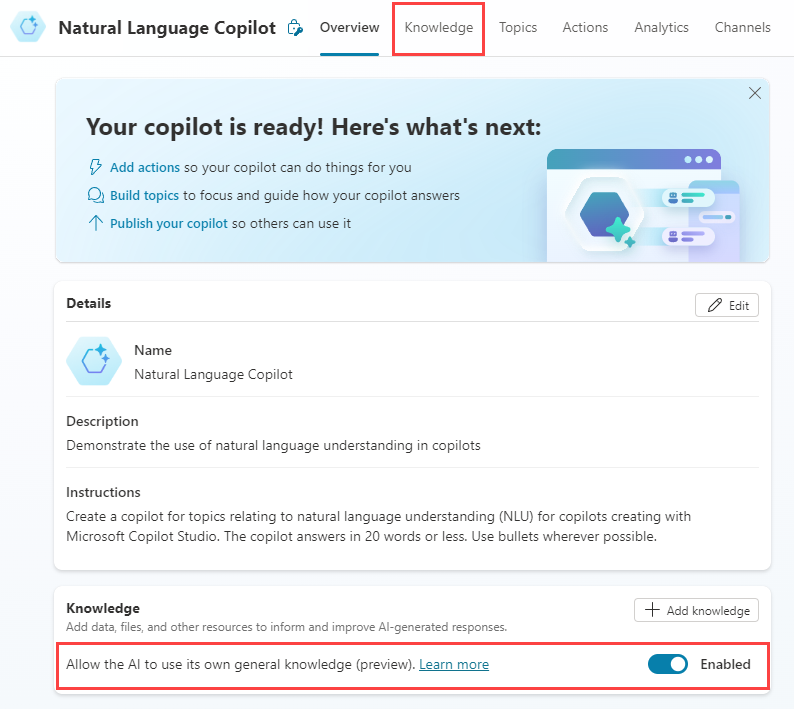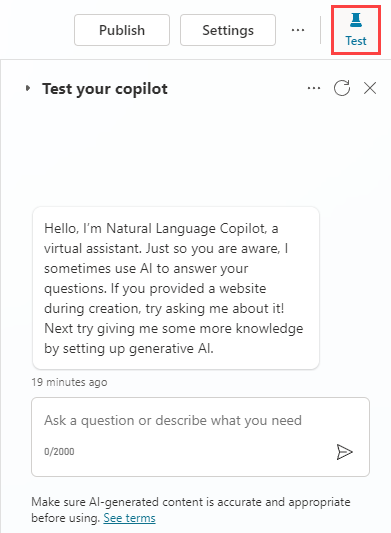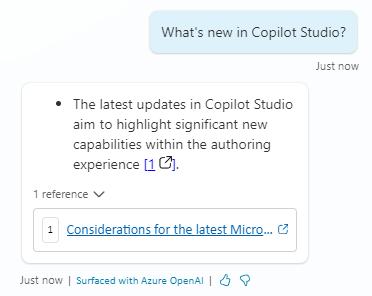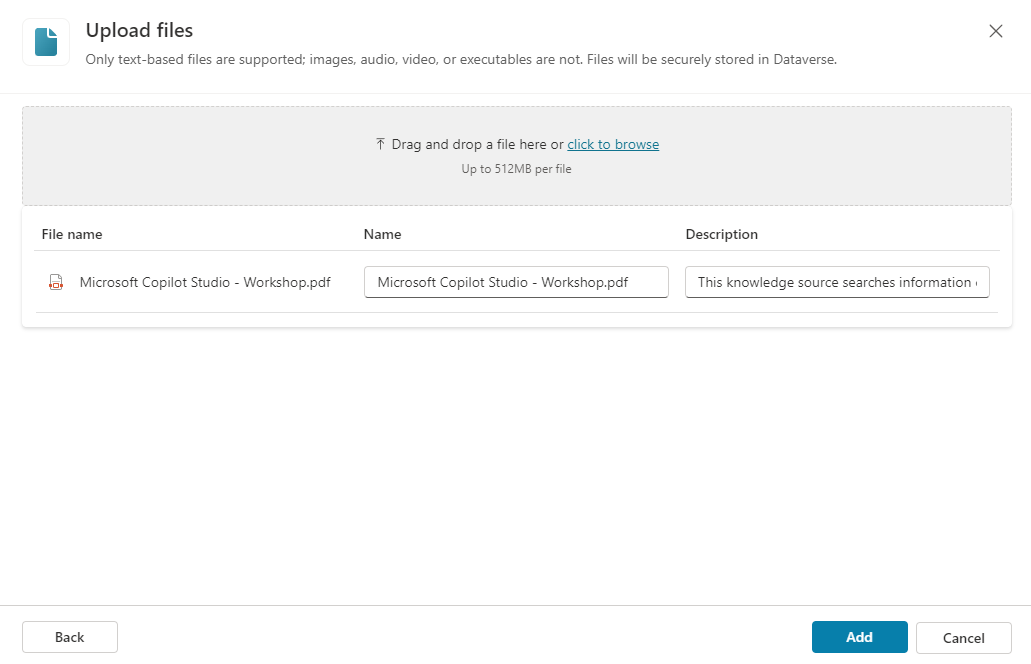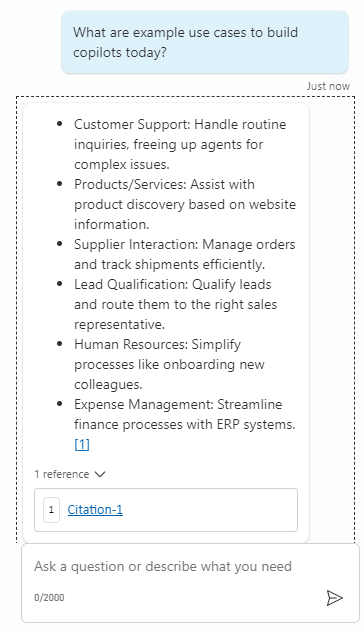Generative Answers
With Microsoft Copilot Studio's generative answers feature, your copilot can retrieve and present information from various internal or external sources without the need for creating specific topics. These answers can serve as the primary source of information for your copilot or as a fallback when pre-authored topics can't address a user's inquiry. This allows for the quick creation and deployment of a functional copilot without the need for manually authoring multiple topics that might not meet your customer's needs.
What is especially important, and why this is being introduced before anything else, is to help makers start considering what data sources are available, which could be used to summarize answers to possible customer or employee questions. Depending on those data sources and if you can utilize them within Copilot Studio could mean that based on your use case, you might be able to focus on a smaller set of topics to author using the authoring canvas and deliver value to your customers or employees quicker.
In this unit, you'll add knowledge to a copilot.
Add knowledge to a copilot
Enable Generative answers
With your Copilot open in Microsoft Copilot Studio, select the Overview tab.
Below Details in the Knowledge section of the Overview page, ensure the Allow the AI to use its own general knowledge is Enabled, as shown.
Add a public website to knowledge
Select the Knowledge tab then select + Add knowledge. This display the list of knowledge sources.
Select the Public websites tile.
Enter
https://learn.microsoft.com/en-us/microsoft-copilot-studio/in the Public website link field.Select Add.
Select Add.
Select the Topics tab and select All.
Tip
Any topics that begin with Lesson are examples of topics and can be turned off by selecting the enabled toggle.
Select the Conversational boosting topic. The generative answers node is included.
Now pay attention to the test panel in Microsoft Copilot Studio, which can be found in the right side of the screen, as shown below.
In the test panel, ask the question
What's new in Copilot Studio?.You should get a generated response based from the data available on the Microsoft Learn documentation website with a link to page on Microsoft Learn. An example of a generated answer is in the screenshot below:
You can ask more questions in the test panel and monitor what type of response you get.
This unit covers the Generative Answers feature in Copilot Studio, which allows your copilot to find and present information from multiple sources, internal or external, without having to manually author a topic. This functionality can be used as the primary behavior for your copilot or as a fallback when authored topics are unable to address the user's question.
This fundamentally changes the way conversational experiences are created. This unit goes through considerations on what use cases you're considering from your business that could be addressed with a Copilot experience. Understanding the fundamentals of Generative Answers, you should begin to think about your data sources that hold key information, and if those could be useful within your Copilot.
For example, your workflow might now look like this:
You create a copilot and enable the Generative Answers feature, then test it thoroughly
After testing, you publish your copilot to provide instant answers, assistance, and guidance to your customers or copilot users
You create individual topics for the most important or frequently asked questions from your customers, based on analytics from previous copilots or existing support issues
This workflow might require some time and specialized knowledge, but with generative answers enabled, your copilot is up and running from day one.
To learn more about this specific feature, see the Microsoft Documentation on Generative Answers:
In the next section, we'll go over how you can add a database file to your Copilot.
Add a knowledge document
When building a Copilot in Copilot Studio, you might need the Copilot to access non-public data. With the Knowledge function of Copilot Studio, you can provide this grounding data in various ways: by uploading files, connecting to SharePoint or OneDrive, adding Dataverse tables, and more.
Providing a knowledge document helps the Copilot understand and relate the data to user queries. In this section, we'll add a PDF file containing details of a workshop on Copilot Studio.
The knowledge file we'll be using is located here. Select the download icon top copy the file to your local machine.
Start by navigating to the Knowledge tab of your Copilot's homepage.
Select + Add knowledge.
In the Add available knowledge sources window that opens, select the Files tile.
In the Upload files window, select click to browse, then locate and select the provided Microsoft Copilot Studio - Workshop.pdf file and select Open.
Select Add.
After a few minutes, the file should appear as Ready in the Knowledge section of the Copilot's homepage.
In the test panel, ask the question
What are example use cases to build copilots today?.You should get a generated response based from the contents of the file with a citation. An example of a generated answer is in the screenshot below:
